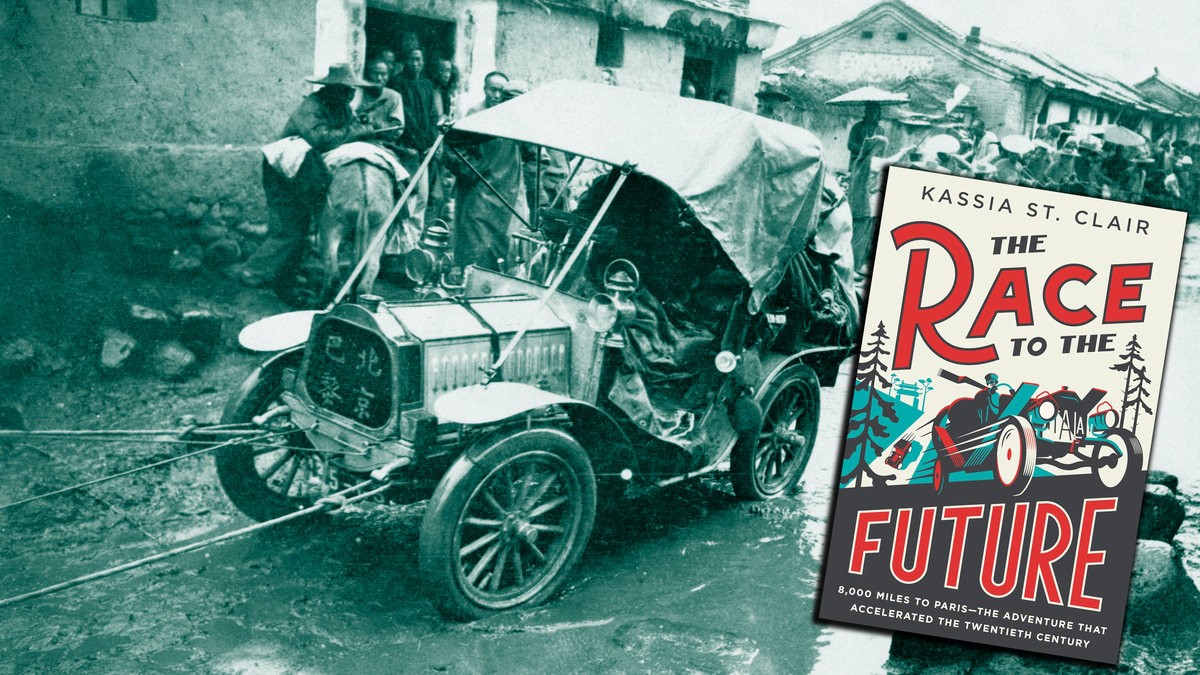In 1907, the automotive world was a drastically different place. If you were going to travel somewhere, you wouldn’t have even considered going by automobile unless you were rich. Vast swaths of the world’s population had never moved faster than the speed of a horse, and the Ford Model T was yet to change the world. And yet, in 1907, five cars and 12 drivers or passengers departed from Peking — now, Beijing, China — for an 8,000-mile drive to Paris, France.
That premise alone sounds unbelievable, but it’s a true story that finds its fullest expression in a new book from author Kassia St. Clair titled The Race to the Future: 8,000 Miles to Paris – The Adventure That Accelerated The Twentieth Century.
By 1907, city-to-city distance races had become fairly regular occurrences in Europe. These events were designed to push young automotive machinery to its limits and to reward the wealthy or inventive drivers with accolades, and the contests inevitably aided in the development of young automotive technology. But the Peking-to-Paris race was designed to be more than just a race; it was to be an adventure.
Organized by Parisian newspaper Le Matin in an attempt to sell papers, the Peking-Paris race would be unlike anything ever done before in an automobile. Drivers and their crews would traverse through China, Siberia, Russia, and Europe, sometimes driving but more regularly shoving their vehicles out of some muddy conundrum. They drove through the Gobi Desert and over the Ural Mountains, making roughshod repairs and trying not to starve to death. All but one of the vehicles featured a journalist as part of its crew; those journalists were tasked with telegraphing live updates back to Le Matin whenever they could.
The machinery in the challenge was as diverse as the ideologies about motorsport technology at the time. On one end of the spectrum was the three-wheeled, six-horsepower Contal Mototri, a light and nimble vehicle that was believed to easily traverse any obstacles in its path but would be slower on paved roads. On the other end was an Itala making somewhere between 35 and 45 horsepower; many pundits assumed this heavier car would only thrive on the paved sections of the race, while it would struggle in the muck. In between those poles of performance were two 10-hp De Dion-Boutons representing the pride of France and a 15-hp Spyker from the Netherlands.
Truly understanding the significance of the Peking-Paris race means understanding the state of the world at the time. One of my favorite parts of Race to the Future was that author St. Clair dedicates every other chapter to that all-important context. Before you even read about the start of the race, for example, St. Clair guides you through the birth of the automobile. As the drivers send their first telegrams, St. Clair helps you understand just how critical an invention the telegraph was. As the drivers trek through rural Siberia, St. Clair discusses the long history of the horse as a form of transportation, and why we moved to something new. In another chapter, she just as artfully explores why gasoline became the de facto power source for automobiles when, at the turn of the 20th century, people were using everything from alcohol to electricity to move motor cars.
All this is weaved beautifully into the story of the Peking-Paris itself, which is inherently intriguing. Because the race was organized by a French newspaper, it was a travesty that an Italian car lead the field for most of the race. One competitor alleged to have pulled off a stunningly rapid feat — only for St. Clair to reveal that he must have taken the train instead, something that every other writer on this topic seems to have missed. One team almost died of exposure in the Gobi, another failed to make it much further than the walls of Peking. One competitor was European royalty, while another exposed himself as a serial fraudster.
The Peking-Paris race was certainly less of a “race” than it was an adventure — but that doesn’t make it any less of a compelling story, and Kassia St. Clair is the perfect person to bring it to life. I had so much fun reading this that I want to call it a romp, but I also don’t want to cheapen the wealth of knowledge that The Race to the Future brings. If you’ve ever been interested in anything automotive, this is a perfect little sampling of just what the history of the automobile has to offer.
The Race to the Future: 8,000 Miles to Paris – The Adventure That Accelerated The Twentieth Century will officially go on sale in the U.S. on May 14, 2024 — but you can pre-order your copy now.

